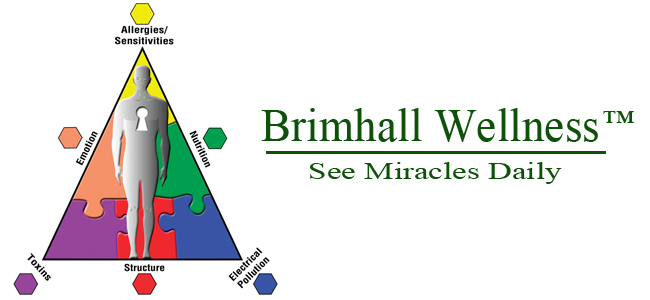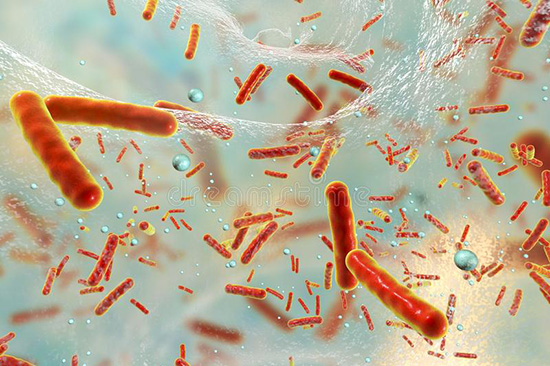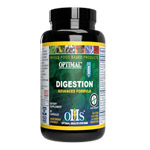
February 27, 2023 Puzzle Piece
Biofilms Are Common, Chronic, Degenerative and Can Be Associated With Covid Long Haulers
Biofilms
are a group of organisms, including bacteria, viruses, fungi, and
parasites, that form around damaged and/or infected areas of the body.
Common health issues that may be involved with biofilms include:
- Kidney stone development
- Covid Long Haulers
- Otitis Media infections
- Endocarditis
- Diabetic ulcerations
- Plaque on our teeth
- Mucosal layers in the gut lumen, etc.
- Persistent infections

Biofilms can be everywhere/anywhere in our internal environment. They
can be a major threat to our health. According to the National
Institutes of Health, more than 65% of all microbial and chronic
infections are associated with biofilms. Examples include pneumonia in
cystic fibrosis patients, form on chronic wounds, chronic otitis media,
prostatitis, and sinusitis.
Biofilms are very resistant to treatment. They adhere to substances all
over the body preventing the immune system from doing its job. The
area does not even have to be alive or organic. These films form on
teeth, braces or even on medical devices like catheters or implants.
Biofilm infections affect many people and especially in the developed
parts of the World because of junk food diets and highly refined
products, overeating, overuse of antibiotics and treatment of symptoms
and not the causes of dysfunction.
A quote on biofilms from a paper published in the Natural Medicine Journal by
Jacob Schor, ND, FABNO, and Lise Alschuler, ND, FABNO: “Certain
microorganisms, in particular certain species of bacteria and yeast,
will convert or coalesce from individual free-living single individuals
into an aggregate of cells. These aggregates are bound together by a
film of secreted material — ‘a hydrated polymeric matrix of their own
synthesis to form biofilms’ — best described as slime. Thus, bacteria
(and some yeast) can exist in 2 different life forms. In 1 form, the
individual bacteria exist as single, independent, or planktonic cells
and in the second form, the bacteria organize into sessile aggregates.”
In an article titled “Bacterial Biofilms: A Common Cause of Persistent
Infections,” JW Costerton at the Center for Biofilm Engineering in
Montana defines a bacterial biofilm as “a structured community of
bacterial cells enclosed in a self-produced polymeric matrix and
adherent to an inert or living surface.”
This means bacteria can join on any surface and start to form a
protective matrix around itself. The matrix is made of polymers —
substances composed of molecules with repeating structural units that
are connected by chemical bonds. Species of bacteria, yeast, and viruses
can work together to form communities or colonies that enable
individual organisms to survive and thrive more effectively than if they
were living on their own.
In these biofilm communities, anaerobic bacteria can attach to inert
surfaces. They can then develop an environment in which even more
complicated and diverse organisms start exchanging genetic material.
These biofilms often develop into chronic, infectious conditions. These
conditions can develop into endocarditis, diabetic ulceration,
infections on the surfaces of implantable devices and Long Haul Covid.
Acute infections are assumed to involve planktonic bacteria and are
treatable with antibiotics. Once converted to biofilms, the same
bacterial infections often develop into a chronic state, untreatable
with antibiotics. This wall or biofilm that is created, protects the
infection from our body’s natural defenses.
According to a review in the journal Discoveries, multiple
studies have shown that during the time a biofilm is being created, the
pathogens inside it can communicate with each other in a phenomenon
called quorum sensing. Although the mechanisms behind quorum sensing are
not fully understood, the phenomenon allows a single-celled bacterium
to perceive how many other bacteria are in close proximity. If a
bacterium can sense that it is surrounded by a dense population of other
pathogens, it can be capable of joining them and contribute to the
formation of a biofilm.
Bacteria that engage in quorum sensing communicate their presence by
emitting chemical messages that fellow infectious agents can recognize.
When the messages grow strong enough, the bacteria respond in masse,
behaving as a group. Quorum sensing can occur within a single bacterial
species or between diverse species and can regulate a host of different
processes, serving as a simple communication network. A variety of
different molecules can be used as signals. This is referred to as
biofilm “talk” and allows quorum sensing to build microcolonies and keep
water channels open.
When bacteria become involved in a biofilm, their behavior changes. And
they become more resistant to the immune system and to antibiotics. It
has been estimated biofilm bacteria can be up to a thousand times more resistant to
treatment than free-swimming bacteria of the same type. Even if a
course of heavy antibiotics is successful, several cells called “persisters” can survive and can then start the process of division and repopulation.
“Though biofilms are essential for the growth and survival of healthy
flora, unfriendly bugs can also use these structures to repopulate and
are the root of many long-term, recurrent, and resistant infections. If
you hear the phrase, ’I get better for a while and then all my symptoms
come back,’ think biofilm issues. No number of antimicrobial agents,
pharmaceutical or herbal can get passed the biofilm to properly address
infection. You must break down the structure of these biofilms so the
antimicrobial agents can do their best work,” says Dr. Leah Linder with
SFI Health.
Another very important side note is Lyme spirochetes can hide out in
biofilms, remaining dormant for a time. This helps explain why
antibiotics can be ineffective once the biofilm starts to develop. It is
important to treat Lyme infections aggressively when exposed.

.
TREATMENT: THIS IS WHERE OHS ENZYMES CAN WORK VERY WELL. TAKE OHS
ACUTE, ON AN EMPTY STOMACH. This Helps to BREAK DOWN THE BIOFILMS. Take
one to two Acute on an empty stomach and wait at least 30 minutes to
eat morning and night. A complication can be Acute may be too strong to
take on an empty stomach. If that is a problem, have the least food
possible with your Acute to manage GI discomfort. If the GI system is
still too sensitive to take Acute, take 2-3 OHS 1 Digestion on an empty
stomach three times a day for 30-60 days to break down the Biofilms.

Other OHS products and nutritional’s that may help dissolve biofilms and assist your immune system are:
Opti-Immune VRL, Opti-Para, Opti-Metal Detox, Opti-Enviro Detox, Essential Protect, Shrooms and Resveratrol.
“In some ways, biofilms are one of your body’s short-term survival
mechanisms: Isolating a problem area so that it does not spread. But, in
a great paradox, biofilms also create microenvironments where cancer,
infections, toxins, and inflammation can hide — untouched by your body’s
defense and repair mechanisms,” says Dr. Isaac Eliaz, author of The Survival Paradox.
“When you disrupt and break down biofilms, you can allow your immune
system, medicines, and integrative therapies to do what they do best —
repair, rejuvenate, and heal you.”
Look for Biofilms in Covid Long Haulers,
John W Brimhall, DC. BA, BS, FIAMA, DIBAK
Resources:
- Monroe, D. Looking for Chinks in the Armor of Bacterial Biofilms. 2007 Nov. DOI: 10.1371/journal.pbio.0050307
- Nat Prod Rep. 2010 Mar;27(3):343-69. doi: 10.1039/b804469b. Epub 2010 Feb 3
- Dickschat JS,Quorum sensing and bacterial biofilms
APMIS Suppl. The role of bacterial biofilms in chronic infections. 2013 May;(136):1-51. doi: 10.1111/apm.12099
Yours in Health and Wellness,
John W Brimhall, DC, BA, BS, FIAMA, DIBAK
(Only registered customers can rate)
There are no comments for this product.